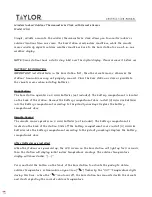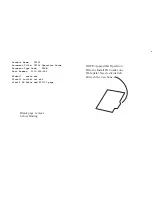
Proline Kryomats
9 / 137
Reference
Refers to further information in other sections.
Note
Here special attention is drawn to some aspect.
1.2
General safety information
A heating and cooling thermostat heats or cools and circulates heat transfer liquids according to specified parameters.
This involves hazards due to high or low temperatures, fire and general hazards due to the application of electrical
energy.
The user is largely protected by the application of relevant standards.
Further hazard sources may arise due to the type of tempering medium, e.g. by exceeding or undercutting certain
temperature thresholds or by the breakage of the container and reaction with the heat transfer liquid.
It is not possible to consider all eventualities. They remain largely subject to the judgment and responsibility of the
operator.
The equipment must only be used as prescribed and as described in these operating instructions. This includes
operation by instructed specialist personnel.
The equipment is not rated for use under medical conditions according to DIN EN 60601-1 or IEC 601-1.
Classification in accordance with EMC requirements of DIN EN 61326-1
Device
Immunity
requirements
Emissions class
Customer power supply
Proline Kryomat
Table 2 (Industrial) in
accordance with
DIN EN 61326-1
Emissions Class B
in accordance with
CISPR 11
Only for EU
Domestic connection value
≥ 100 A
Proline Kryomat
Table 2 (Industrial) in
accordance with
DIN EN 61326-1
Emissions Class B
in accordance with
CISPR 11
Worldwide
No limitation
Only for the USA:
Instructions for Class A digital devices
“This equipment has been tested and found to comply with the limits for Class A digital device, pursuant to Part 15 of
the FCC (Federal Communication Commission) Rules. These limits are designed to provide reasonable protection
against harmful interference when the equipment is operated in a commercial environment. This equipment generates,
uses, and can radiate radio frequency energy and, if not installed and used in accordance with the instruction manual,
may cause harmful interference to radio communications. Operation of this equipment in a residential area is likely to
cause harmful interference in which case the user will be required to correct the interference at his own expense.”
“This device complies with Part 15 of the FCC (Federal Communication Commission) Rules. Operation is subject to
the following two conditions: (1) This device may not cause harmful interference, and (2) this device must accept any
interference received, including interference that may cause undesired operation.”
Only for Canada:
“This Class A digital apparatus complies with Canadian ICES-003” (ICES = Interference Causing Equipment










































